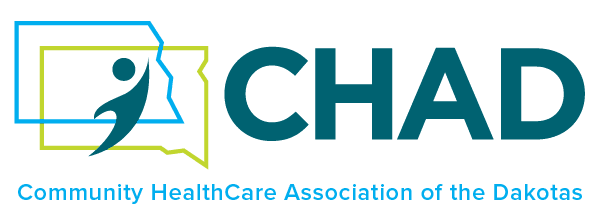By Jennifer Saueressig, RN, Clinical Quality Manager
Each November, we recognize Diabetes Awareness Month as a time to focus on the growing impact of both Type 1 and Type 2 diabetes in our communities. Across North and South Dakota, thousands of individuals and families are affected by this chronic condition, and health centers play a critical role in prevention, screening, and ongoing care.
In North Dakota, approximately 9.6% of adults have been diagnosed with diabetes, and in South Dakota, the rate is even higher at 10.5%. While these numbers reflect mostly adults with Type 2 diabetes, the burden of the disease is reaching younger populations as well. In North Dakota, about 4 in every 1,000 children under 18 are living with Type 1 diabetes. South Dakota’s data mirror national trends showing an increase in youth diagnosed with both Type 1 and Type 2 diabetes, highlighting the urgent need for early detection and education among families.
Type 1 diabetes is a chronic autoimmune condition in which the body’s immune system attacks the insulin-producing cells in the pancreas. As a result, individuals with Type 1 must take insulin by injection or pump to survive. While often associated with childhood onset, over half of Type 1 diabetes diagnoses are in people ages 20 and older. Type 2 diabetes develops more gradually, often in adulthood, and is linked to insulin resistance, lifestyle factors, and access to nutritious food, health care, and education. For both forms, early screening and ongoing support can make a life-changing difference.
CHAD, in partnership with the North Dakota Department of Health & Human Services and South Dakota Department of Health, is leading a diabetes grant initiative that supports health centers in screening for diabetes and referring patients to education and management services. This work aligns with our network’s Clinical Priority Measure, identified by the Clinical Advisory Committee, to reduce A1C levels across the network. Through coordinated education, improved care pathways, and collaboration with community partners, health centers are helping patients manage their conditions and prevent complications.
This month is also a time to reflect on the personal side of diabetes. Behind every statistic is a story of resilience, hope, and teamwork. One of our CHAD colleagues has graciously shared her own family’s experience navigating her daughter’s Type 1 diabetes diagnosis at a young age, a reminder of why our work matters and how deeply it touches the lives of those we serve.
“I never knew that ‘panic’ was an official lab result, until I read the summary report from the ER physician who diagnosed my 6-year-old daughter with Type 1 diabetes (T1D) in 2023. I would later learn that 1 in 3 people who develop T1D are tragically lost due to missed signs or lack of access to care, and that my daughter was in a life-threatening emergency the night of her diagnosis. Looking back, her symptoms had been building for weeks leading up to that point, including irritability, fatigue, frequent urination, and increased thirst and hunger. Now, I encourage everyone to know these signs.
Managing T1D is a precise science, but also a delicate art – and each day, you wake up and start all over again. Our medical team has been incredible, guiding us through so much new learning (diabetes nurse educators are my new heroes!). Throughout this experience, I’ve often reflected on the critical role health centers play in the early detection and management of chronic diseases. To the health center teams in ND and SD – thank you. I know you are saving lives and helping people manage chronic diseases every day.”
Together, we can continue to raise awareness, support patients and families, and strengthen our collective efforts to reduce the burden of diabetes across North and South Dakota.
Explore our Diabetes Prevention & Awareness Toolkit

